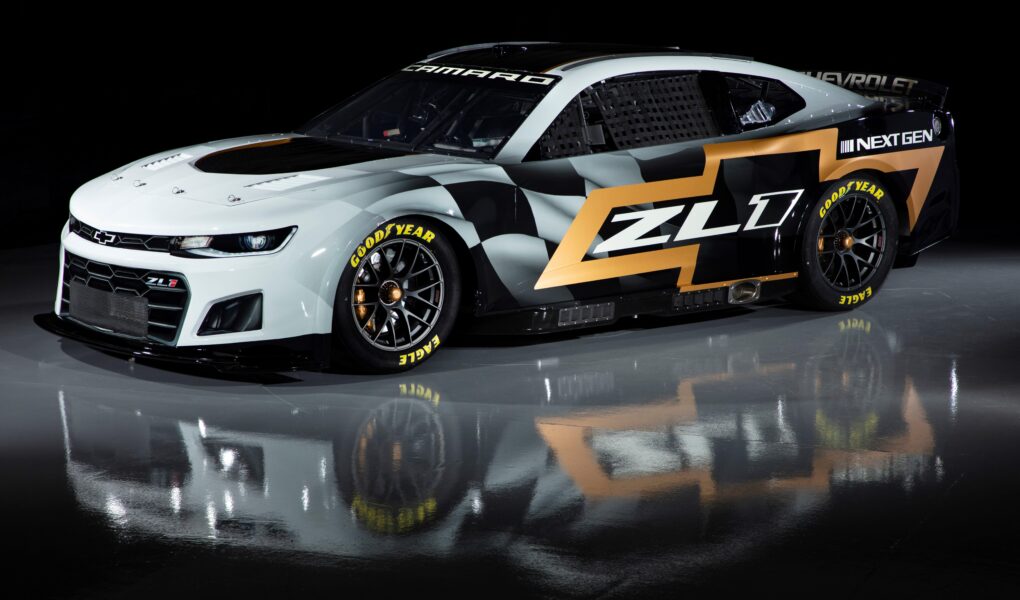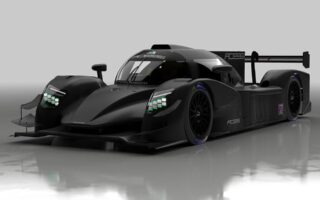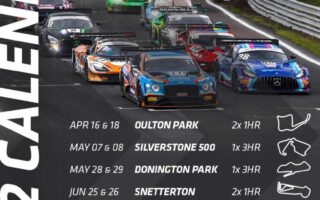In the high-octane world of NASCAR, each season brings with it a unique blend of tradition and innovation, where speed meets strategy on the hallowed asphalt of racetracks across America. As we dive into the 2022 NASCAR season, the spotlight shifts to the machines that make it all possible: the cars. With power-packed engines, meticulously designed aerodynamics, and state-of-the-art technology, NASCAR cars have evolved significantly, reflecting both the heritage of motorsport and the demand for cutting-edge performance. This article explores the key features, technological advancements, and design philosophies behind the 2022 NASCAR vehicles, revealing how these remarkable cars not only embody the spirit of competition but also push the boundaries of motorsport engineering. Buckle up as we take a closer look at the powerful beasts that roar down the tracks, captivating fans and drivers alike in a thrilling display of speed and skill.
Table of Contents
- The Evolution of NASCAR Cars in 2022: Performance Enhancements and Technological Innovations
- Safety First: Key Features That Enhance Driver Protection in 2022 NASCAR Vehicles
- Tuning for Victory: Optimizing Your NASCAR Car for Peak Performance on the Track
- A Look Ahead: Insights on Future Trends in NASCAR Car Design and Development
- Q&A
- In Retrospect
The Evolution of NASCAR Cars in 2022: Performance Enhancements and Technological Innovations
The year 2022 marked a significant turning point in NASCAR, as teams adapted to a new generation of racing vehicles designed to enhance both performance and safety. With the introduction of the Next Gen car, there were several key features that paved the way for this evolution:
- Improved aerodynamics: The new design focused on reducing drag and optimizing downforce, which allowed for better handling and higher speeds on the track.
- More durable materials: The use of composite body panels not only added strength but also contributed to the overall weight reduction of the cars.
- Increased safety features: Enhanced crash testing and improvements in driver cockpit safety measures were implemented, ensuring a higher level of protection on race day.
Additionally, the integration of cutting-edge technology played a crucial role in reshaping the racing experience. The adoption of a centralized parts system streamlined the production process and ensured that all teams had access to the latest innovations, leveling the competitive field. Key technological advancements included:
- New tire specifications: The introduction of redesigned tires improved grip and wear rates, allowing for longer stints during races and reducing the frequency of pit stops.
- Advanced telemetry systems: Enhanced data tracking capabilities enabled teams to gather real-time insights into car performance and driver behavior, allowing for more strategic adjustments during races.
- Improvements in fuel efficiency: Efforts to optimize fuel usage allowed cars to run longer on a single tank, changing race strategy and enhancing overall competitiveness.
| Feature | Description |
|---|---|
| Aerodynamic Design | Redesigned chassis to minimize drag and enhance downforce. |
| Material Upgrades | Use of composites for increased durability and weight reduction. |
| Safety Enhancements | Advanced safety measures and crash testing for driver protection. |
Safety First: Key Features That Enhance Driver Protection in 2022 NASCAR Vehicles
NASCAR has made significant strides in enhancing driver safety with the introduction of innovative technology and refined vehicle design in 2022. Key features that bolster driver protection include:
- Roughed Safety Cage: Reinforced steel tubing forms a robust safety cell that absorbs impact during collisions.
- Advanced Fire Suppression Systems: Automatic fire extinguishing systems are now standard, protecting drivers from the dangers of cockpit fires.
- Improved Helmets and HANS Devices: Cutting-edge helmets featuring enhanced padding and the Head and Neck Support (HANS) device drastically reduce head and neck injuries.
- Crash-Tested Seats: Custom-designed seats made from resilient materials provide better support and protection, minimizing the risk of injury during crashes.
In addition to these critical features, the integration of sophisticated data analysis and real-time telemetry systems allows teams to monitor vehicle performance and driver behavior more effectively. This comprehensive safety approach is bolstered by:
- Impact Sensors: Real-time sensors relay data on collision forces, aiding in post-race analysis and future car designs.
- Enhanced Belts and Restraints: Multi-point harness systems ensure that drivers remain securely fastened in their seats, reducing body movement during impacts.
- Predictive Analytics: Utilizing AI-driven models, teams can anticipate crash scenarios and redesign vehicles accordingly.
Tuning for Victory: Optimizing Your NASCAR Car for Peak Performance on the Track
In the high-stakes world of NASCAR, every millisecond counts, and the key to success often lies in the details of vehicle tuning. To achieve peak performance, teams must focus on several crucial aspects of their cars. Aerodynamics plays a significant role; optimizing the car’s shape can reduce drag and improve downforce, allowing it to cut through air more efficiently. Additionally, the suspension setup is critical for handling. Fine-tuning the springs, dampers, and anti-roll bars can significantly enhance the car’s grip on the track, especially in tricky turns.
Equally important is the choice and setup of tires, which can greatly impact speed and traction. Teams often analyze the wear pattern to make informed adjustments for the next laps. Below is a concise summary of essential tuning components for NASCAR cars:
| Component | Importance |
|---|---|
| Engine Tuning | Maximizes horsepower and torque |
| Aerodynamics | Reduces drag, enhances downforce |
| Suspension Setup | Improves handling and stability |
| Tire Selection & Pressure | Increases grip and reduces wear |
| Gear Ratios | Optimizes acceleration and top speed |
With each element fine-tuned, a team can create a well-rounded car that excels on the track. Continuous testing and data analysis are integral to understanding how each adjustment impacts performance. Whether it’s embracing advanced technology in data acquisition or utilizing strategic race-day decisions, the path to victory in NASCAR is paved with a commitment to relentless optimization.
A Look Ahead: Insights on Future Trends in NASCAR Car Design and Development
As we look towards the future of NASCAR car design and development, innovation will play a crucial role in shaping the vehicles that grace the racetrack. With advancements in technology, we anticipate a surge in the integration of aerodynamic enhancements and lightweight materials that increase both speed and efficiency. This evolution will not only enhance performance but will also focus on improving safety measures. Cars equipped with smart technology and data analytics will allow teams to make real-time adjustments, bringing a new layer of strategy to racing.
Moreover, the trend towards sustainability cannot be overlooked. As environmental awareness rises, NASCAR will likely explore alternative power sources alongside traditional fuel options. Potential developments in hybrid systems or the use of renewable energy could soon be a part of the racing landscape, ushering in a new era of eco-conscious performance. Key aspects to keep an eye on include:
- Artificial Intelligence: For predictive analytics and optimized race strategies.
- Safety Innovations: Enhanced crumple zones and driver protection.
- Fan Engagement: More immersive experiences through augmented reality in car designs.
To help visualize these potential changes, here is a simple comparison of traditional versus future anticipated characteristics in car design:
| Aspect | Current Design | Future Design |
|---|---|---|
| Aerodynamics | Standard shapes with limited modifications | Dynamic shapes utilizing active aero technology |
| Materials | Traditional steel and aluminum | Advanced composites and bio-based materials |
| Power Source | Conventional fuel engines | Hybrid or alternative energy systems |
Q&A
Q&A: NASCAR Cars 2022
Q: What are the major changes introduced in the NASCAR cars for the 2022 season?
A: The 2022 NASCAR cars saw the introduction of the Next Gen car, which brought a new design and technology to the racetrack. Key updates included a redesigned chassis, improved aerodynamics, and a shift to a smaller, 18-inch tire. These changes aimed to enhance safety, promote better racing, and create a more level playing field among teams.
Q: How did the Next Gen car improve safety for drivers?
A: Safety was a primary focus in the development of the Next Gen car. The car features a larger, sturdier front and rear clip, enhanced roll cage designs, and improved crash energy management systems, making it more resilient during high-impact collisions. Additionally, the introduction of a new composite body reduces the likelihood of damage and promotes driver protection.
Q: What impact did the transition to 18-inch tires have on performance and handling?
A: Switching to 18-inch tires altered the performance dynamics of NASCAR cars. With a larger wheel and tire, teams had to adapt their setup strategies, as the tires provide different grip levels and handling characteristics. Many drivers reported that the larger tires improve cornering stability and braking performance but also require a shift in driving style and car setup.
Q: Were any new manufacturers or partnerships introduced in the 2022 season?
A: Yes, the 2022 season welcomed the return of the iconic manufacturer, Chevrolet, and featured Ford and Toyota’s competitive presence as well. A noteworthy partnership was established with Next Gen technology supplier, which collaborated closely with teams to optimize performance, pushing the boundaries of innovation within the NASCAR community.
Q: How did the changes impact the overall racing experience during the 2022 season?
A: The changes brought about by the Next Gen car aimed to create a more competitive and exciting racing experience. Many drivers and analysts reported that the new car offered better handling and allowed for increased side-by-side racing. Fans witnessed a fresh wave of excitement, with several races showcasing thrilling battles for position and unpredictable outcomes, ultimately revitalizing the sport.
Q: What are the key features that differentiate the 2022 NASCAR cars from previous models?
A: The 2022 NASCAR cars are distinct in several ways. Notably, the Next Gen car features a modular design, allowing for easier part swapping and repairs. The use of a sequential gearbox instead of a traditional H-pattern shifter, as well as improvements in the suspension setup, contributes to not only better performance but also a more exciting driving experience on track.
Q: How did fans respond to the new car design and technology?
A: Fan response to the 2022 NASCAR cars was largely positive. Viewers appreciated the sleek, modernized look and the enhanced competitiveness on the track. The implementation of technology that promotes varied racing strategies and highlights driver skill resonated well with the audience. Many fans expressed excitement about the possibilities the Next Gen car brings for future seasons.
Q: Looking ahead, what can we expect for the future of NASCAR cars beyond 2022?
A: As NASCAR continues to evolve, future models are anticipated to incorporate even more innovative technology, with further emphasis on sustainability and performance. Potential developments may include hybrid systems, advanced telemetry for real-time data analysis, and continued focus on driver safety. The 2022 season sets a strong foundation for a thrilling and forward-thinking era in NASCAR racing.
In Retrospect
As we cross the finish line on our exploration of NASCAR cars in 2022, it’s clear that the evolution of these high-octane machines mirrors the relentless spirit of the sport itself. From advancements in technology and aerodynamics to innovations in safety and design, each vehicle encapsulates years of engineering prowess and racing heritage. Whether you’re a die-hard fan or a casual observer, the 2022 models stand as a testament to the resilience and creativity driving this exhilarating world. As we look ahead to future seasons, one thing remains certain: the roar of NASCAR engines will continue to ignite passion and excitement, ensuring that the legacy of these remarkable cars endures. Buckle up, for the journey is far from over.



